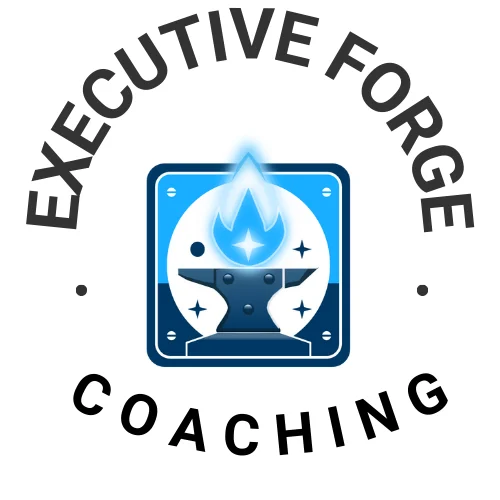The end of the year is a natural time for reflection and forward planning. Many people take stock of the months gone by and set their sights on new beginnings. This is why New Year’s resolutions remain a popular tradition year after year.
However, there’s an inherent challenge: most New Year’s resolutions fail to stick. According to studies, a staggering number of people abandon their goals by February. Why? Because resolutions are often vague aspirations, detached from daily habits or a larger life vision.
But what if, instead of fleeting resolutions, you treated this season as an opportunity to create a meaningful, actionable life plan? By borrowing proven principles from business strategy and productivity frameworks, you can design a forward-looking plan that drives sustainable, positive change in your personal and professional life. Here’s how.
Shift the Frame: From Resolutions to Strategic Planning
Businesses use strategic planning to clarify their vision, set clear goals, and align their resources to achieve results. This process, which prioritizes intentionality and long-term thinking, can be directly applied to our personal lives. Harvard Business Review’s recent article, “Use Strategic Thinking to Create the Life You Want,” highlights how adopting business-inspired tools can bring structure and clarity to personal goal-setting.
Begin by asking yourself some of the same questions businesses ask during strategy sessions:
- Where am I now? What is working well in my life, and what needs attention?
- Where do I want to be? What are the values, experiences, and outcomes I want to prioritize?
- How will I get there? What specific actions and resources do I need to bring my vision to life?
Thinking strategically encourages you to take a broader, more intentional approach. Rather than reactive resolutions like “exercise more” or “save money,” you can anchor your goals in a more comprehensive vision for your life.
Design Your Life with Purpose
The Designing Your Life (DYL) methodology, developed by Stanford professors Bill Burnett and Dave Evans, provides another powerful lens. This approach encourages you to think of your life as something you can proactively design, rather than passively endure.
Key practices from this framework include:
- Create a Life Dashboard: Reflect on key domains of your life—health, work, relationships, finances, and personal growth. Evaluate how satisfied you are in each area and identify where you’d like to focus your efforts. This exercise provides a clear starting point for prioritizing goals.
- Prototype Your Future: Instead of committing to an all-or-nothing approach, experiment with small, low-stakes actions. For example, if you’re considering a career change, start by shadowing someone in your target role or taking a short course. This “try before you buy” mentality prevents analysis paralysis and allows you to make informed decisions.
- Reframe Problems: Stop waiting for the mythical “perfect life plan.” Focus instead on what’s actionable now. Which opportunities can you design today, even if the big picture still feels uncertain?
Identify and Align Your “Areas”
Similar to DYL, David Allen’s Getting Things Done (GTD) framework introduces the concept of “areas of focus.” These represent the key responsibilities and priorities in your life, such as health, relationships, career, or community. Start by making a list of your own areas. For each, define what success looks like and identify any gaps between your current reality and your desired state. For instance:
- Health: Success might mean staying active five days a week. What’s holding you back—time constraints, motivation, or lack of a plan?
- Career: Success might involve earning a promotion or feeling more engaged at work. What specific steps would help you move closer to that vision?
This process helps you clarify what’s important in each area and ensures your goals reflect your priorities holistically.
Andy Walter, in his insightful book “Waiting is not an action”, describes a powerful process for goal-setting within these areas. Walter, a successful executive and strategic advisor to the largest corporations, learned this method during his time as an executive at P&G and has used it to achieve impressive results in his own life. Here’s how Walter’s process works:
- For each area, write down 3 goals for the next year.
- Circle the 3 goals that are most important to you across all areas.
- For each of these 3 prioritized goals, write down 3 specific actions to take.
These actions then become your focused plan for the year. Walter also applies this method to create 5-year and 10-year plans, allowing for both short-term progress and long-term vision.This approach combines the big-picture thinking of areas with the actionable specificity needed for real progress. It forces you to prioritize ruthlessly, ensuring your energy is directed towards what truly matters most.
Use OKRs to Turn Vision Into Measurable Results
One of the most effective ways to translate long-term vision into actionable steps is by using Objectives and Key Results (OKRs)—a goal-setting framework popularized by companies like Google. OKRs combine big-picture objectives with measurable, time-bound results.
Here’s how to adapt OKRs for personal planning:
- Set Objectives: Define the “what”—the overarching outcome you want to achieve. For example, “Improve my physical and mental health.”
- Define Key Results: Break your objective into measurable milestones. For instance:
- Lose 10 pounds by June.
- Meditate 15 minutes daily for three months.
- Run a 5K race by April.
- Track and Reflect: Revisit your OKRs regularly—monthly or quarterly—to evaluate your progress and make adjustments as needed.
OKRs ensure that your goals are not only ambitious but also grounded in actionable criteria, bridging the gap between aspiration and execution.
Year Compass: A Reflective Approach to Annual Planning
My colleague and an exception leadership coach Alison Farmer recently shared another powerful method for creating an intentional life plan called the Year Compass. This method has helped over a million people worldwide since 2012 design their ideal year through structured reflection and planning.
The Year Compass approach is unique because it emphasizes both retrospective analysis and forward-looking design. The process involves:
- Comprehensive Year Review: Spend time systematically reflecting on the past year, documenting:
- Key experiences and milestones
- Lessons learned
- Challenges overcome
- Unexpected highlights
- Intentional Future Design: Use guided questions to:
- Clarify your desires for the upcoming year
- Identify personal and professional aspirations
- Create a holistic view of your potential growth
What sets Year Compass apart is its gentle, non-prescriptive approach. Unlike rigid goal-setting methods, it encourages personal discovery and self-acceptance.
My Personal Approach: Combining Reflection, Visualization and Strategic Planning
About five years ago, I undertook a strategic planning exercise that significantly influenced my life trajectory. I wrote a vivid two-page narrative describing my life ten years into the future, detailing a typical morning—where I was living, what I was doing, and how I felt. This immersive portrayal of my potential future became a guiding beacon, subtly influencing my decisions and actions over the years.
Looking back, I realize that while the future didn’t unfold exactly as I imagined, I was about 80% accurate. This experience reinforced a key insight: visualization is a powerful navigation tool. By creating an emotionally resonant picture of my desired future, I effectively programmed my subconscious to recognize and pursue opportunities that aligned with that vision.
I also used Designing Your Life methodology to clarify what I truly wanted from life and where my passions lay. I explored various “prototypes” of potential futures, experimenting with different ideas and paths. Through this reflective journey, I discovered that coaching resonated deeply with my values and aspirations. This realization ultimately guided me toward pursuing coaching as a new career, aligning my professional life with my personal passions.
For over a decade, I’ve been using my own annual planning ritual that combines elements from various methodologies. This practice has become an integral part of my year-end routine, allowing me to reflect deeply on the past and strategically plan for the future.
Here’s how I structure my annual planning process:
- Two-Week Reflection Period: I use the holiday downtime in late December for intentional reflection and planning. This quiet period allows for deep thinking without the usual day-to-day distractions.
- Year-End Journaling (December 31st): On the last day of the year, I sit down to write my annual journal entry. This comprehensive review includes:
- A high-level assessment of the year
- Highlights and lowlights of the past 12 months
- Expectations and plans for the upcoming year
- Area-Based OKRs: I define Objectives and Key Results (OKRs) across five key areas of my life:
- Home & Family
- Health & Fitness
- Self-Improvement
- Finance
- Career
- Continuous Review: Throughout the year, I refer back to this journal entry and my OKRs, using them as a compass to guide my decisions and actions.
This personalized method combines the reflective aspects of practices like Year Compass with the strategic focus of OKRs and area-based planning. It allows me to honor the year that’s passed while setting a clear direction for the one ahead.
By sharing my approach, I hope to illustrate that there’s no one-size-fits-all method for life strategy and annual planning. The key is to find a combination of practices that resonate with you and commit to them consistently. Over time, you’ll refine your process, making it an invaluable tool for personal growth and achievement.
Make It Enduring: Establish Systems, Not Just Goals
Even the best life plans will falter if they’re not supported by systems and habits. A common mistake is focusing solely on outcomes (“I want to write a book”) without addressing the daily behaviors that make those outcomes possible. Instead, build systems that sustain progress.
For example:
- Use weekly planning sessions to review your goals, assess what’s working, and make course corrections.
- Build habits that align with your priorities, such as a morning routine for exercise or setting boundaries for work-life balance.
James Clear, author of Atomic Habits, reminds us that “you do not rise to the level of your goals; you fall to the level of your systems.” Make sure your systems are strong enough to support the weight of your ambitions.
A Year of Purpose, Not Regret
As you approach the end of the year, resist the urge to limit yourself to traditional resolutions. Instead, treat this time as an opportunity to design a more intentional, fulfilling life. By borrowing tools like strategic planning, Designing Your Life practices, GTD’s areas of focus, OKRs, and reflective methods like Year Compass, you can create a plan that doesn’t just sound good on January 1st but endures throughout the year.
Remember, the goal isn’t perfection, but progress. Be kind to yourself, celebrate small wins, and stay committed to the process of continuous improvement. With these approaches, you’re not just setting goals—you’re designing a life of purpose and meaning.
As you embark on your year-end planning, consider which of these methods resonate with you. Mix and match, experiment, and create a personal planning ritual that energizes and inspires you.


